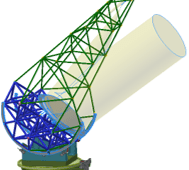PPARC セミナー (2025/04/07)

PPARC セミナー (2025/04/07)
(1) Akira Kazama
[Title]
Analysis of optical depth and altitude distribution of Martian dust using OMEGA/Mars Express
[Abstract]
Martian dust plays a crucial role in climate and meteorology through horizontal and vertical transport in the atmosphere. Previous nadir observations in the ultraviolet, visible, and infrared wavelengths provided insights into the dust horizontal distribution (e.g., Smith et al., 2001; Montabone et al., 2015; Battalio and Wang, 2021; Leseigneur and Vincendon, 2023). Previous solar occultation and limb observations provided valuable information on dust vertical distribution, but uncertainties persist regarding its spatial variability and transport mechanisms. Conventional limb and solar occultation observations can retrieve dust altitude information directly, but their spatial and temporal coverage is limited. This study aims to obtain new insights into the dust vertical distribution by applying the spectral synergy method to nadir observations.
The spectral synergy method estimates the altitude of atmospheric constituents by leveraging differences in absorption characteristics at multiple wavelengths (Pan et al., 1995; Pan et al., 1998; Edwards et al., 2009). This method applied in Earth remote sensing for retrieving the vertical distributions of CO2 (Christi & Stephens, 2004), O3 (Landgraf & Hasekamp, 2007), and CH4 (Razavi et al., 2009) and is recently used to analyze water vapor in the Martian atmosphere (Knutsen et al., 2022). However, no studies have applied this approach to Martian dust yet. This study evaluates the feasibility and challenges of using the spectral synergy method to estimate the vertical distribution of Martian dust.
We analyzed nadir observation data acquired by the OMEGA near-infrared imaging spectrometer onboard Mars Express during Martian Years (MY) 27-29. Specifically, we compared dust optical depth (DOD) retrieved at two different wavelengths: a 2.77 μm CO2 absorption saturated band (Kazama et al., under review.) and a 2.01 μm CO2 absorption band (Leseigneur and Vincendon, 2023). The 2.77 μm band is saturated under typical Martian atmospheric conditions (>400 Pa) and is primarily sensitive to dust at altitudes of 20-30 km. In contrast, the 2.01 μm band, with weaker CO2 absorption, primarily reflects dust at altitudes of 10-20 km. By combining these two wavelengths, we attempt to infer the dust vertical distribution from nadir observations.
I will talk about our work progress in this seminar.





